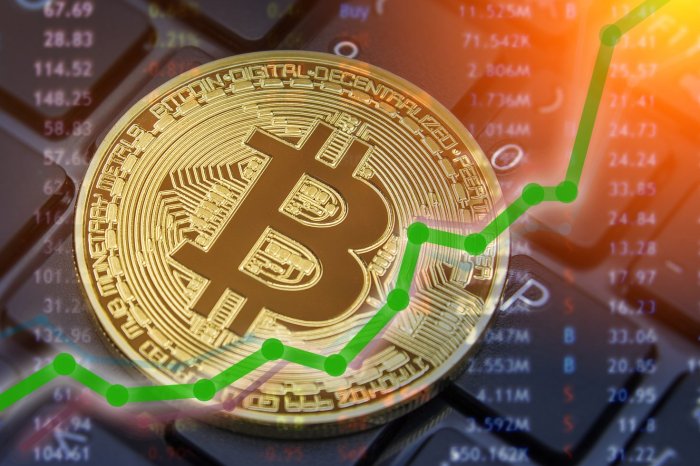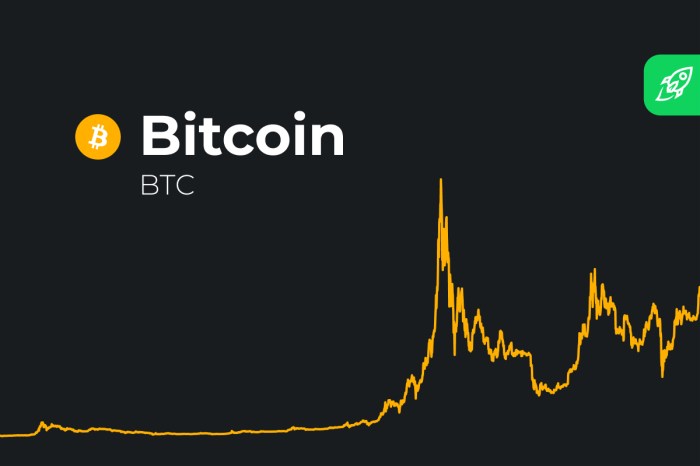Bitcoin Price Prediction for 2025

Bitcoin, since its inception in 2009, has experienced a rollercoaster ride of price fluctuations. From its humble beginnings worth mere cents, it has climbed to record highs exceeding $60,000, only to subsequently undergo significant corrections. Major market events, such as the 2017 bull run fueled by increasing adoption and media attention, and the subsequent “crypto winter” of 2018-2019, highlight the inherent volatility of the cryptocurrency market. More recently, the 2021 bull run saw Bitcoin reach its all-time high, followed by another period of price decline. These cycles underscore the complex interplay of factors impacting Bitcoin’s price.
Bitcoin’s price volatility stems from a confluence of factors. Supply and demand dynamics play a crucial role, with limited Bitcoin supply (21 million coins) potentially driving price increases if demand surges. Regulatory announcements and government policies worldwide significantly influence investor sentiment and market behavior. Technological advancements, such as the scaling solutions being developed to improve transaction speeds and reduce fees, can also impact price. Furthermore, macroeconomic conditions, including inflation rates and general market sentiment, influence investor decisions and thus Bitcoin’s price. Lastly, the narrative surrounding Bitcoin, encompassing its role as a store of value, a hedge against inflation, and a decentralized alternative to traditional finance, significantly affects its perceived value and subsequent price.
Factors Influencing Bitcoin’s Price Volatility, Bitcoin Price In 2025
The unpredictable nature of Bitcoin’s price is a result of several interacting elements. Firstly, market sentiment, driven by news, social media trends, and overall investor confidence, can cause dramatic price swings. A positive news story, for example, might trigger a rapid price increase, while negative news can lead to a sharp decline. Secondly, macroeconomic factors such as inflation and interest rates play a significant role. During periods of high inflation, investors may seek alternative assets, including Bitcoin, leading to increased demand and higher prices. Conversely, rising interest rates can make holding Bitcoin less attractive compared to other investments offering higher yields. Thirdly, regulatory uncertainty remains a major factor. Changes in government regulations regarding cryptocurrencies can significantly impact investor confidence and price. For instance, a country banning Bitcoin trading could trigger a price drop. Finally, technological advancements and adoption rates also influence price. Wider adoption by businesses and individuals increases demand, potentially pushing the price higher. Conversely, technological setbacks or security breaches could negatively impact investor confidence and the price. The interplay of these factors makes predicting Bitcoin’s price a complex undertaking.
Factors Influencing Bitcoin’s Price in 2025
Predicting Bitcoin’s price in 2025 requires considering a complex interplay of factors. While no one can definitively state the exact price, analyzing these influential elements provides a more informed perspective. The following sections delve into the key drivers that will likely shape Bitcoin’s market trajectory in the coming years.
Macroeconomic Factors
Global economic conditions significantly impact Bitcoin’s price. High inflation, for instance, can drive investors towards Bitcoin as a hedge against currency devaluation, potentially increasing demand and price. Conversely, rising interest rates can make holding Bitcoin less attractive compared to interest-bearing assets, potentially leading to price decreases. A global recession could also negatively impact Bitcoin’s price as investors seek safer, more liquid assets. The correlation between Bitcoin and traditional markets, while sometimes weak, can become pronounced during periods of significant economic uncertainty. For example, the 2022 bear market saw Bitcoin’s price fall alongside declines in global stock markets.
Regulatory Developments and Government Policies
Government regulations and policies worldwide will play a crucial role. Clear, consistent regulatory frameworks can boost investor confidence and institutional adoption, potentially driving price increases. Conversely, overly restrictive or uncertain regulations could stifle growth and suppress the price. The approach taken by major economies like the US, China, and the EU will be particularly influential. For instance, the increasing clarity surrounding cryptocurrency regulations in certain jurisdictions could foster more institutional investment, thereby impacting Bitcoin’s price positively.
Technological Advancements
Technological advancements, particularly layer-2 scaling solutions like the Lightning Network, aim to improve Bitcoin’s transaction speed and reduce fees. Widespread adoption of these solutions could enhance Bitcoin’s usability and appeal to a broader range of users and businesses, potentially leading to increased demand and price appreciation. The success of these scaling solutions in addressing Bitcoin’s scalability challenges will be a key factor determining its future price. Improved transaction speeds and lower fees would make Bitcoin more competitive with traditional payment systems.
Institutional Investment and Adoption
Growing institutional investment in Bitcoin is a significant factor. As more large financial institutions, corporations, and asset managers allocate capital to Bitcoin, it increases liquidity and demand, driving price appreciation. The level of institutional adoption is a strong indicator of Bitcoin’s long-term viability and potential. Examples of institutional adoption include MicroStrategy’s significant Bitcoin holdings and the increasing number of Bitcoin ETFs.
Geopolitical Events
Geopolitical events can create volatility in Bitcoin’s price. International conflicts, political instability, and economic sanctions can trigger a flight to safety, potentially increasing demand for Bitcoin as a decentralized and less susceptible asset. Conversely, periods of global stability could lead to decreased demand. The ongoing war in Ukraine, for example, has demonstrated how geopolitical uncertainty can impact cryptocurrency markets.
Bitcoin Halving Events
Bitcoin’s halving events, which occur approximately every four years, reduce the rate at which new Bitcoins are created. This reduction in supply can lead to increased scarcity and potentially higher prices, assuming demand remains relatively stable or increases. Historically, halving events have been followed by periods of price appreciation, although the timing and magnitude of these price increases vary.
Market Sentiment and Media Coverage
Market sentiment and media coverage significantly influence Bitcoin’s price. Positive media coverage and bullish sentiment can drive price increases, while negative news and bearish sentiment can lead to price declines. Social media also plays a significant role in shaping market sentiment and can amplify price swings. The overall narrative surrounding Bitcoin – whether it’s perceived as a speculative asset or a store of value – directly impacts investor behavior and subsequently, the price.
Potential Bitcoin Price Scenarios in 2025: Bitcoin Price In 2025

Predicting the price of Bitcoin in 2025 is inherently speculative, given the volatile nature of the cryptocurrency market. However, by considering various macroeconomic factors, technological advancements, and regulatory developments, we can construct plausible price scenarios. These scenarios represent a range of possibilities, from highly optimistic to pessimistic outlooks. It is crucial to remember that these are educated guesses, not guarantees.
Bitcoin Price In 2025 – Several factors contribute to the uncertainty surrounding Bitcoin’s future price. These include global economic conditions, the adoption rate of Bitcoin by institutions and individuals, the development of competing cryptocurrencies, and the regulatory landscape. Each of these elements can significantly impact the price trajectory.
Bitcoin Price Scenarios in 2025
The following table Artikels three distinct scenarios for Bitcoin’s price in 2025: bullish, bearish, and neutral. Each scenario is supported by a rationale based on current trends and potential future developments.
| Scenario | Price Range | Rationale |
|---|---|---|
| Bullish | $150,000 – $250,000 | This scenario assumes widespread institutional adoption, continued technological advancements (like the Lightning Network’s scaling solutions), and a positive global macroeconomic environment. Increased demand from institutional investors, coupled with limited supply, could drive prices significantly higher. This mirrors the 2021 bull run, though the magnitude is speculative. For example, if major financial institutions like BlackRock continue to increase their Bitcoin holdings and mainstream adoption accelerates, a price surge of this magnitude becomes plausible. |
| Bearish | $10,000 – $30,000 | This scenario is predicated on a combination of factors, including a global economic recession, increased regulatory scrutiny leading to stricter controls or bans in major markets, and the emergence of a superior alternative cryptocurrency. A significant loss of investor confidence, coupled with negative news cycles, could trigger a substantial price drop, similar to the 2018 bear market. Increased competition from other cryptocurrencies with improved technology or regulatory advantages could also negatively impact Bitcoin’s dominance. |
| Neutral | $50,000 – $75,000 | This scenario assumes a relatively stable global economy and a moderate level of Bitcoin adoption. Regulatory uncertainty persists, but no major negative events occur. Technological advancements continue, but at a slower pace than in the bullish scenario. This scenario represents a continuation of the current trend with moderate price fluctuations, similar to the price range observed in 2023-2024. It is a balance between the potential for growth and the risks of market volatility and regulatory changes. |
